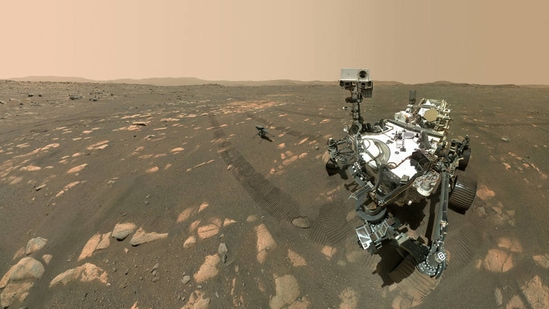How Perseverance rover took historic selfie on Mars? Nasa engineer Vandi Verma explains
In a video shared by Nasa, Perseverance’s chief engineer for robotic operations at JPL said that the way the rover takes a selfie is a “little more complex” than taking a selfie from our smartphones.
Nasa’s Perseverance rover captured the historic selfie beside the Ingenuity Mars helicopter on the Red Planet on April 6, which proved to be one of the most complex rover selfies ever taken. While selfies primarily allow engineers to check wear and tear on the rover, they can also inspire a new generation of space enthusiasts. Vandi Verma, Perseverance’s chief engineer for robotic operations at Nasa’s Jet Propulsion Laboratory (JPL) in Southern California, bears testimony of this.

Verma said that a picture from Sojourner, Nasa’s first Mars rover, sparked her interest in the US space agency. Verma worked as a driver for Nasa’s Opportunity and Curiosity rovers and helped to create Curiosity’s first selfie, which was taken on October 31, 2012. “When we took that first selfie, we didn’t realize these would become so iconic and routine,” she said.
Also Read | Astronomers find out when first stars shone, could be seen by Nasa’s Webb telescope
So how does a rover take a selfie?
In a video posted by Nasa’s JPL, Verma said that the way the rover takes a selfie is a “little more complex” than taking a selfie from our smartphones. The rover uses the WATSON (Wide Angle Topographic Sensor for Operations and eNgineering) camera attached at the end of the robotic arm. But the WATSON camera was designed to take close-up images of rocks for scientific analysis and not wide-angle images.
Since even the full extension of the arm can’t cover the entire rover in a single image, engineers had to command the rover to take dozens of individual images and then stitch them together to produce the selfie. To do that, the engineers try to hold the WATSON camera sensor in the same position to take different images.
“The reason you don't see the robotic arm in the selfie is because it's moving between the different image frames that we are taking, and we include enough overlap between the images so that when we stitch them together, we don't have to include the arm,” said Verma.






